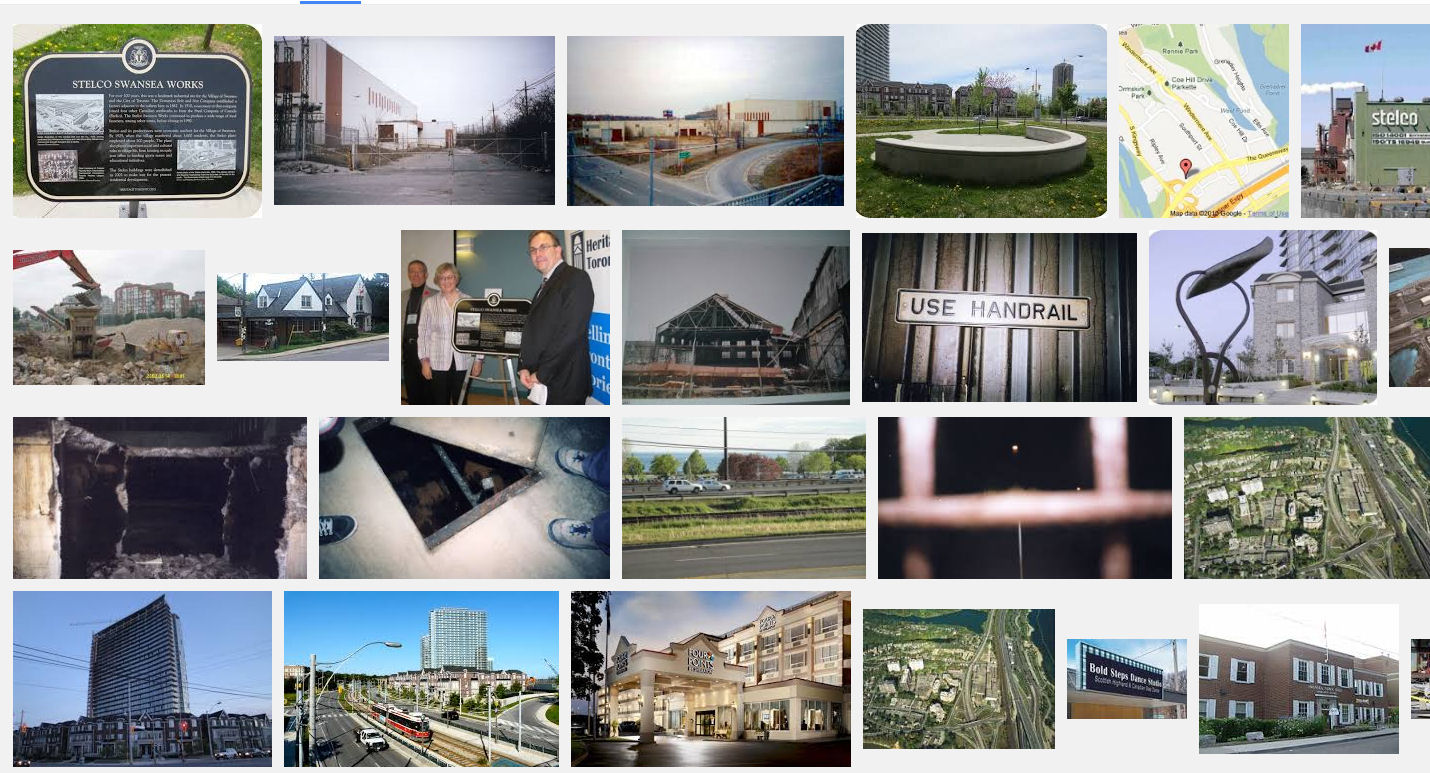Swansea: a local Eden
From iron works to brownfield to residential development
By Tom G. Kernaghan
On the east lot of the former Stelco Swansea Works site, Cresford Developments is laying the foundation of “Windermere by the Lake,” a large residential complex that will contain over 200 town homes and condominium units.
Local residents are happy to see the old eyesore gone, and the project that sits on a 13-acre site straddling Windermere Avenue just south of The Queensway, has been hailed as an example of urban revitalization.
But this location, where French explorer Etienne Brûlé first arrived on the shores of Lake Ontario in 1615, has a long history of vitality.
For over 100 years, Stelco went through numerous expansions and produced a vast array of nuts, bolts, and other fasteners to feed the explosive growth of 19th and 20th centuries. Built with local bricks and employing many local residents, Stelco helped define Swansea (formerly Windermere), a unique and proud community that was an independent village until 1967.
“It was definitely a central, integral part of the community,” says a representative of the Swansea Historical Society, who wished to remain anonymous, regarding Stelco and its previous incarnations: Dominion Bolt Works, Canada Bolt and Nut Company, and the Steel Company of Canada.
Stelco employees joined the volunteer fire department, and the company supported churches, local sports teams, and children’s activities.
“Everyone in the plant showed up for his retirement party. He had good years there,” says local resident Marita Faulds, about her husband Alex, who was a bolt maker at the company for 25 years. She has fond memories of the Stelco life. “It was a good time for all of us.”
Then, in 1990, Stelco closed the plant, and in the decade that followed the building sat dark and idle, a target for vandals. It was also a location for film and TV productions like La Femme Nikita.
For the most part, though, it remained a remnant of Swansea’s vibrant industrial past, because the plant site was a brownfield (contaminated ground), something that came to light after the closure. Beneath the site, especially the factory side on the west, lay blast furnace clinker, coal ash, metal slats, heating oil tanks, hydraulics lubricants, cutting fluids, and solvents. Clean up of the site required the physical removal of land and contaminants, as well as biological treatment.
“The vast bulk of it turned out to be landfill,” says Michael Peterson, president of REON Development Corporation, a brownfield redevelopment company that “brings contaminated sites back to life.”
“Stelco had been approached to sell many times,” says Peterson. But the company was unable to find a buyer it felt could handle the considerable environmental, logistical, financial, and legal challenges posed by the contamination—until REON entered the picture.
REON bought the land in 2000, and began the remediation of the east lot 2001. It moved on to the west lot in 2002. Clean up of the site requied the physical removal of land and contaminants, as well as biological treamtement.
Although current owner Cresford Development is building the new complex, REON did the groundwork.
This process included the unusual step of involving the public more than what is required by law. REON encouraged guided tours of the site, had 26 meetings with the residents groups, and sought designs that would minimize the negative impact on the neighbourhood.
“We said we will not lie to you and we will not patronize you,” says Peterson of REON’s relationship with the community.
While some residents would have liked a park on the site, they understood that such an option “wasn’t feasible financially,” says a member of the Swansea Historical Society. And, after a decade of desuetude, many felt that “anything was an improvement.”
Some concerns remain, however. There are those who would like the site’s redevelopment to reflects its past glory, and argue the new development should maintain reasonable heights and view corridors to Lake Ontario.
After all, Swansea has always been a strong community bound equally by tradition and progress. The historical society published a 1936 souvenir brochure hailing “the remarkable development of Swansea, now a great residential district,” and noting, “in the days when Brule haunted the neighbhourhood, Swansea was called The Garden of Eden.”
(Gleaner News, Toronto)

